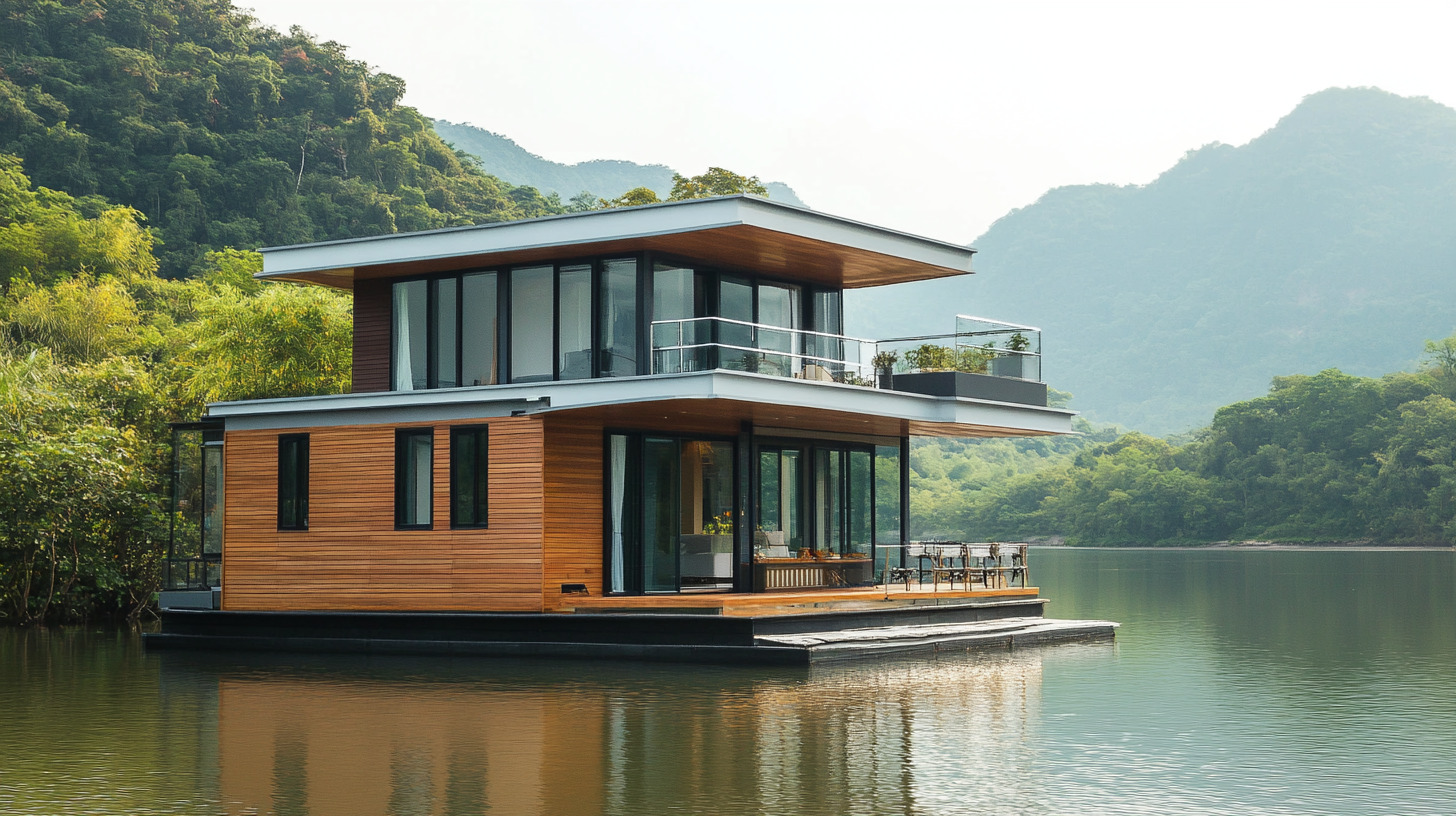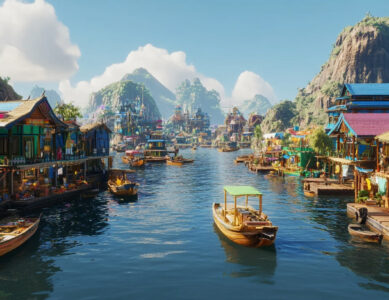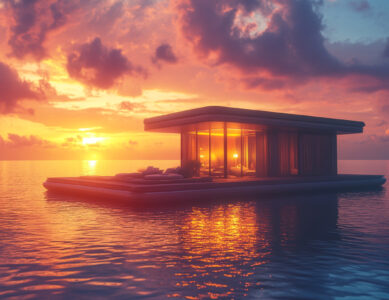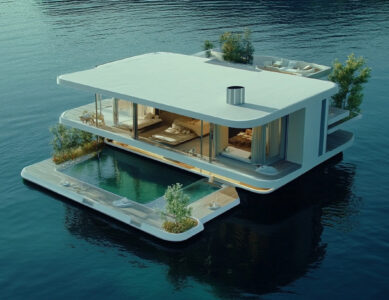Discover how floating homes have transformed from simple houseboats into architectural masterpieces that blend comfort, innovation, and sustainability.
The Humble Beginnings of Floating Homes
Floating homes have a long history, originating as utilitarian structures designed for practicality rather than aesthetics. Traditional houseboats, seen in regions like Amsterdam’s canals and Kerala’s backwaters, served as functional homes for families and communities living on the water. Built from basic materials like wood and bamboo, these early homes prioritized adaptability to water conditions over comfort.
However, even in their simplest forms, these homes established a foundation for the harmonious relationship between humans and waterways—a principle that continues to inspire modern floating home design.
Aesthetic Meets Functionality: The Rise of Modern Floating Homes
As the concept of waterfront living gained popularity, the design of floating homes began to evolve. No longer just functional, these homes started incorporating elements of style and comfort. Innovations in construction materials and techniques allowed for more stable and durable structures, enabling homeowners to focus on aesthetic appeal.
Modern floating homes often feature open floor plans, large windows, and sleek, minimalist designs that maximize natural light and panoramic water views. Locations like Vancouver and Seattle have become hotspots for these contemporary homes, showcasing architectural styles that seamlessly blend with their aquatic surroundings.
Sustainability Takes Center Stage
In recent years, sustainability has become a driving force behind floating home design. Eco-conscious travelers and homeowners alike are drawn to accommodations that minimize their environmental footprint. Floating homes now incorporate features such as:
- Solar Panels: Harnessing renewable energy for power.
- Water Recycling Systems: Reducing water waste and ensuring efficient usage.
- Green Roofs: Providing insulation and improving air quality.
- Sustainable Materials: Using bamboo, recycled wood, and other eco-friendly resources.
Destinations like Stockholm’s archipelago and the Maldives showcase these innovations, proving that luxury and sustainability can coexist on the water.
The Emergence of Luxury Floating Homes
Luxury floating homes have redefined what it means to live on the water. These homes feature amenities typically found in high-end resorts, including infinity pools, private decks, and even underwater bedrooms. Designed to cater to discerning travelers, these homes prioritize privacy, comfort, and exclusivity.
One standout example is the futuristic villas in Dubai, which combine cutting-edge technology with lavish interiors. With smart home systems, energy-efficient designs, and breathtaking water views, these floating homes exemplify the pinnacle of architectural innovation.
Cultural Influences on Floating Home Design
Floating homes are often influenced by the cultures and traditions of their locations. In Southeast Asia, for instance, houseboats on Vietnam’s Ha Long Bay and Cambodia’s Tonlé Sap are designed to reflect local craftsmanship and way of life. Intricate wooden carvings, vibrant colors, and open-air spaces characterize these homes, offering visitors an authentic cultural experience.
In contrast, Scandinavian floating homes prioritize functionality and simplicity, emphasizing clean lines, natural materials, and a strong connection to the surrounding environment. These designs reflect the region’s minimalist aesthetic and commitment to sustainability.
Floating Homes as a Solution to Urban Challenges
As cities face increasing challenges such as overpopulation and rising sea levels, floating homes are emerging as a viable solution. Architectural firms worldwide are exploring the potential of floating communities—self-sustaining neighborhoods built entirely on water. These futuristic concepts aim to address housing shortages while promoting sustainable living.
For example, the Netherlands has developed innovative floating neighborhoods that incorporate green energy solutions, communal spaces, and flood-resistant designs. These projects highlight the adaptability of floating homes in addressing modern urban issues.
The Future of Floating Home Design
The evolution of floating homes shows no signs of slowing down. Architects and designers are continually pushing boundaries, experimenting with new materials and technologies to create homes that are not only visually stunning but also environmentally responsible.
Future trends in floating home design include:
- Biophilic Design: Integrating natural elements like indoor gardens and water features to enhance well-being.
- Smart Home Integration: Using technology to optimize energy use, security, and convenience.
- Off-Grid Capabilities: Designing homes that are entirely self-sufficient, relying on renewable energy and water sources.
These advancements ensure that floating homes will remain at the forefront of innovative and sustainable living.
Conclusion: A New Era of Living on Water
From their humble beginnings to their current status as architectural marvels, floating homes have come a long way. They represent the perfect fusion of nature, comfort, and innovation, offering a unique lifestyle that appeals to eco-conscious travelers, luxury seekers, and urban visionaries alike.
Ready to explore the world of floating home design? Discover how these innovative homes are reshaping the way we live, one waterfront retreat at a time.










